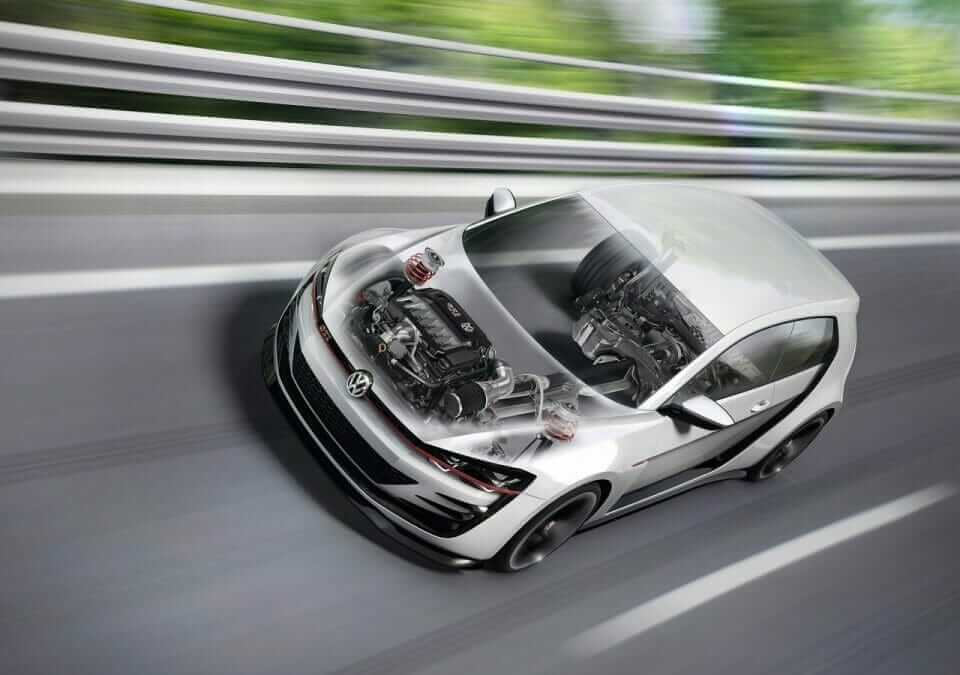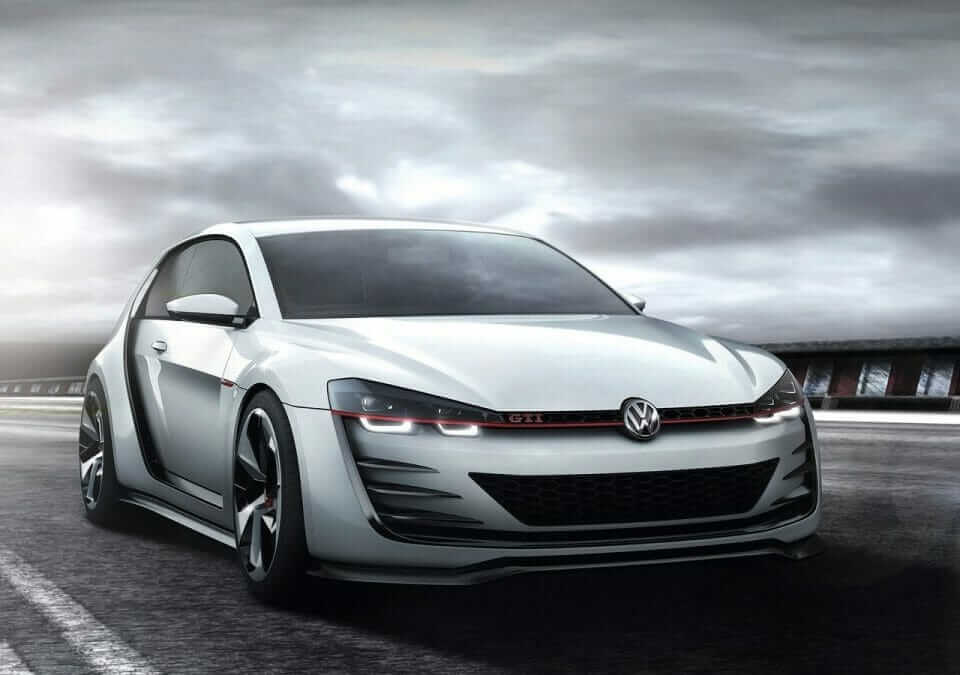
The GTI meeting at Wörthersee is a veritable cult and pure automobile passion. Just like the car everybody is celebrating and driving there. There ought to be 150,000 fans showing up again in 2013. Traditional highlight: the world premiere of a concept car conceived by Volkswagen engineers and designers especially for the meeting. In 2013, it is a visionary GTI for car racing-the “Design Vision GTI.” An unmatched 370 kW / 503 PS Golf. The progressive design study is based on the seventh-generation GTI that was launched just now in Europe, transferring the design and power potential of the icon to the world of car racing. Visually, particularly intriguing: The design team under the aegis of Klaus Bischoff (Head of Design of Volkswagen Brand) has drawn the C pillars and side sills outward as autonomous body elements, thus creating space for substantially enlarged track widths and specially developed 20-inch wheels (with 235 tyres in the front, 275 tyres in the rear). The “Design Vision GTI” achieves 300 km/h, and despite extreme modifications, it comes across as very homogeneous thanks to the precise styling based on the Volkswagen design DNA: this “Super-GTI” could start tomorrow in a racing series!
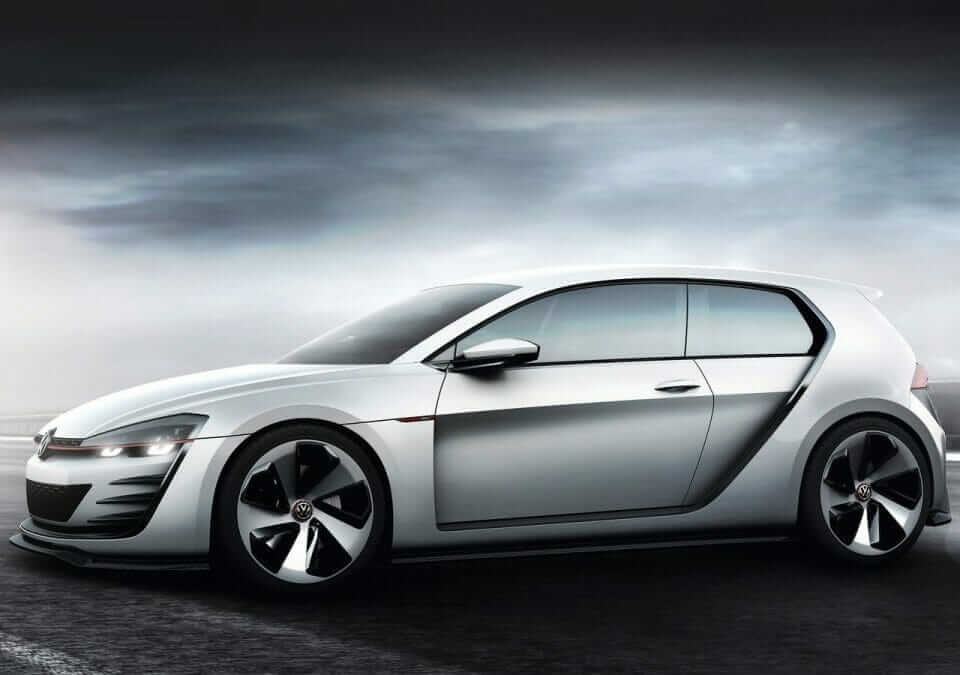
Drive system
The new Golf GTI is already more of a clear leader on the road than ever with an output of 162 kW / 220 PS or 169 kW / 230 PS (Golf GTI Performance), respectively. Now Volkswagen has more than doubled this power on board of the “Design Vision GTI,” with the 503 PS (at 6,500 rpm) mentioned above. So what’s working under the bonnet in the front is not a series four-cylinder but a V6 engine. As with the 2.0-litre engine of the production GTI, however, the 3.0 litre engine of the concept car is a TSI – a direct injection petrol engine with turbocharger. In this case, two turbochargers are on board. Two three-way catalytic converters arranged close to the engine optimise emission behaviour. The V6-TSI develops 500 Nm already in the lower engine speed range (as of 2,000 rpm) and a maximum torque of 560 Nm (between 4,000 rpm and 6,000 rpm). This force is distributed to the front and rear wheels via a dual clutch gearbox (DSG) and an all-wheel drive.
In order to slow down the GTI with corresponding power, going 300 km/h fast as mentioned above, Volkswagen uses ceramic brake discs all around. In the front, the brake callipers grip onto 380-mm discs; at the rear, the diameter is 356 mm. The ceramic brake discs and red-painted brake callipers shine through the spokes of the 20-inch alloy wheels, which have likewise been redesigned. The front wheels (8.5J x 20, ET32) are fitted with 235/35 tyres; the rear wheels (9.5J x 20, ET25) are equipped with 275/30 tyres.With this drive concept and a specially designed sports chassis, the “Design Vision GTI” virtually eats up any type of race track. And pretty damn quick at that: After a mere 3.9 seconds, the study is already going 100 km/h fast.
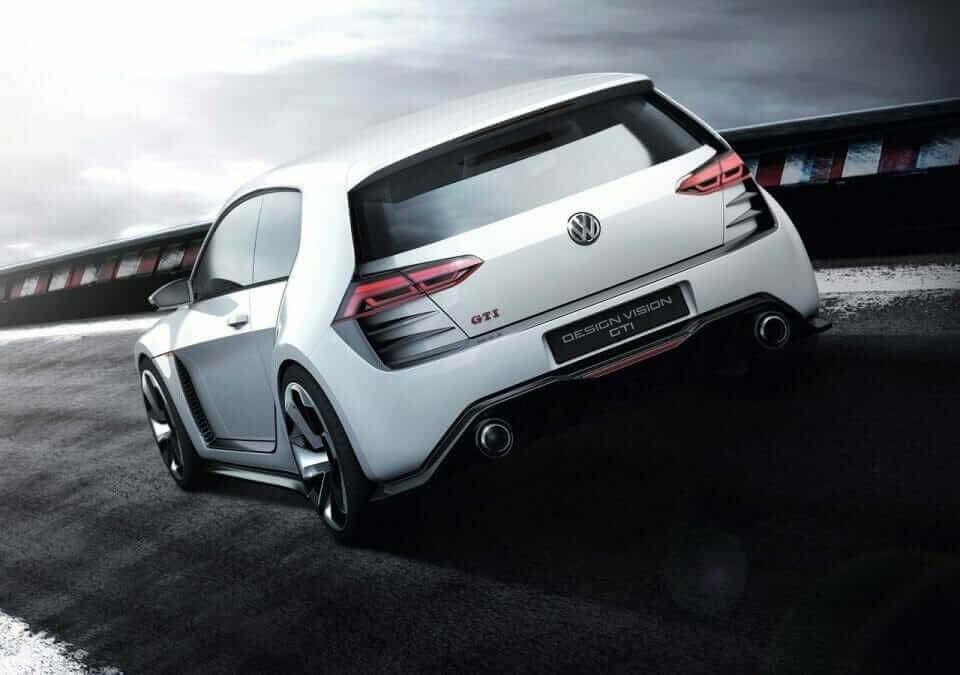
Visionary exterior
Two things become crystal clear when seeing the “Design Vision GTI” for the first time. First: This car is a Volkswagen. Second: This car is a Golf GTI. This may sound banal but it’s exactly this visual clearness that is part of Volkswagen’s secret of success. Klaus Bischoff: “We put our claim to be a global player on a new basis with the DNA of our universal design idiom. A design that visualises the brand’s identity without a doubt is binding for all models that carry the VW logo. Thus each model is recognised as a true Volkswagen by its distinctive design.” That also applies to extreme sporty cars like the “Design Vision GTI.” Result: The concept car makes such a natural and obvious impression as if it could go into production tomorrow. Klaus Bischoff again: “We wanted to bring out the design elements of the GTI as concisely, dynamically and emotionally as we could so as to get to the heart of the fascination that this car emanates.”
Two more things are likewise clear at first glance: First: This car is a racing car. Second: This car is impressive, extremely impressive. Both are to be ascribed to its distinctive racing design and its extraordinarily dynamic proportions.
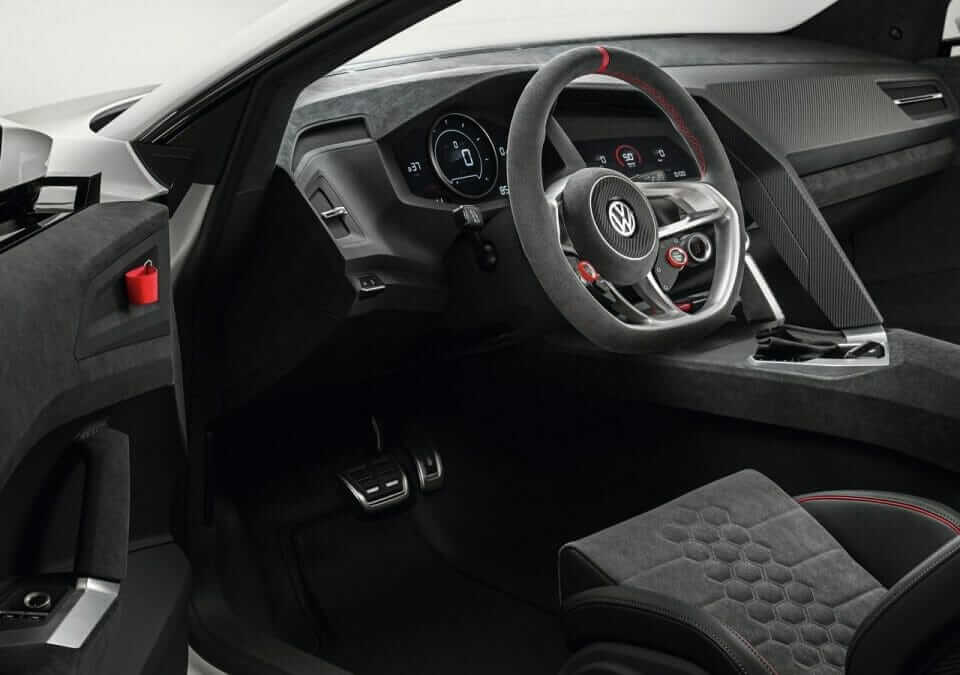
Interior design
Like with the exterior, the typical charisma of a GTI should be palpable in the interior as well – consistently sporty and fit for active driving yet cultivated when it comes to design features. Consequently, the credo of the team briefing by Tomasz Bachorski, Head of Volkswagen Interior Design: “Pure GTI. Concentration on the truly essential. But with style.” Nothing easier than that. After all, the designers responsible for the concept car, Boris Grell, Jan Haacke and Guillermo Mignot, are at home in all Volkswagen interiors – from the up! to the Phaeton – and know how to fine-tune the interior concept individually to the character of each vehicle.
The shapes of the dashboard and the centre console correspond to the well-known GTI interior in their configuration; they are arranged, though, in an even more driver-oriented way, as in motor racing. The surfaces are more taut, the edges harder and more precisely formed. The technical impression is reinforced by the partial use of carbon. Moreover, alcantara in “Anthracite” and “Titan Black” as well as nappa leather in “Black” and “Flash red” dominate the interior. One pleasant detail on the doors is a handle in the shape of a red loop – reminiscent of the Porsche Cup models. The space of the back seats is taken by an X-shaped cross member, which heightens the body stiffness another notch up. The seat belt retractors for the red suspender belts are integrated into the cross member. In the meantime, two black integral helmets are stored away close at hand under the cross member.
